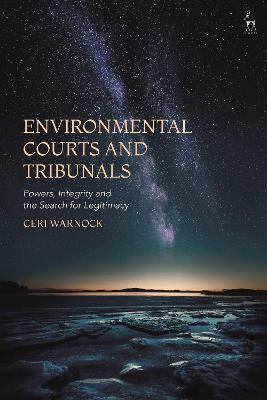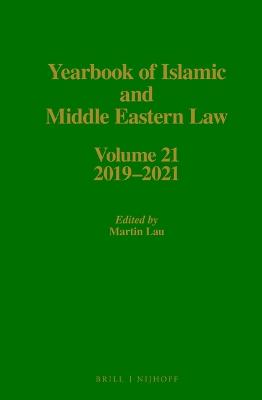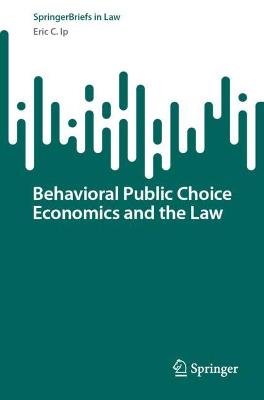Environmental Courts and Tribunals
 portes grátis
portes grátis
Environmental Courts and Tribunals
Powers, Integrity and the Search for Legitimacy
Warnock, Professor Ceri
Bloomsbury Publishing PLC
06/2022
224
Mole
Inglês
9781509944163
15 a 20 dias
Descrição não disponível.
1. Introduction
I. The Rise in Specialist Environmental Adjudication
II. An Interactional Theory for Environmental Adjudication
III. The Method of Developing a Theory for Environmental Adjudication
IV. Certain Caveats
2. Specialist Environment Courts: Mapping the Landscape
I. Specialist Environment Courts: A Typology
II. Specialist Environment Courts as Dynamic Adjudicatory Forms
III. Introducing the Case Studies: The Environment Court of New Zealand and the Land and Environment Court of New South Wales
IV. Underlying Tensions
3. The Struggle to Make Legal Sense of Specialist Environment Courts
I. Normative Legitimacy and Analytical Frames
II. The 'Administrative Justice-Adjudicative Pluralism' Frame
III. The 'Generic Instrumentalism' Frame
IV. The 'Separation of Powers' Frame
V. Developing a Frame that We Can Agree On?
4. Developing the Theory: Adjudicative Integrity
I. The Malleability of Adjudication
II. Normative Justifiability and Adjudicative Integrity
5. Developing the Theory: Contextual Foundations
I. The Inherent Features of Environmental Problems
II. Interaction and Change
III. Uncertainty
IV. Drawing the Threads Together
6. The Interactional Theory in Practice
I. Acknowledging the Challenges in Environmental Adjudication
II. Responding to Uncertainty
III. Responding to the Collective Action Nature of Environmental Problems
IV. Testing the Theory
7. Conclusion
I. Findings
II. Developing the Theory
III. Filling in the Frame
IV. Employing the Theory
V. Future Directions
VI. Conclusion
I. The Rise in Specialist Environmental Adjudication
II. An Interactional Theory for Environmental Adjudication
III. The Method of Developing a Theory for Environmental Adjudication
IV. Certain Caveats
2. Specialist Environment Courts: Mapping the Landscape
I. Specialist Environment Courts: A Typology
II. Specialist Environment Courts as Dynamic Adjudicatory Forms
III. Introducing the Case Studies: The Environment Court of New Zealand and the Land and Environment Court of New South Wales
IV. Underlying Tensions
3. The Struggle to Make Legal Sense of Specialist Environment Courts
I. Normative Legitimacy and Analytical Frames
II. The 'Administrative Justice-Adjudicative Pluralism' Frame
III. The 'Generic Instrumentalism' Frame
IV. The 'Separation of Powers' Frame
V. Developing a Frame that We Can Agree On?
4. Developing the Theory: Adjudicative Integrity
I. The Malleability of Adjudication
II. Normative Justifiability and Adjudicative Integrity
5. Developing the Theory: Contextual Foundations
I. The Inherent Features of Environmental Problems
II. Interaction and Change
III. Uncertainty
IV. Drawing the Threads Together
6. The Interactional Theory in Practice
I. Acknowledging the Challenges in Environmental Adjudication
II. Responding to Uncertainty
III. Responding to the Collective Action Nature of Environmental Problems
IV. Testing the Theory
7. Conclusion
I. Findings
II. Developing the Theory
III. Filling in the Frame
IV. Employing the Theory
V. Future Directions
VI. Conclusion
Este título pertence ao(s) assunto(s) indicados(s). Para ver outros títulos clique no assunto desejado.
1. Introduction
I. The Rise in Specialist Environmental Adjudication
II. An Interactional Theory for Environmental Adjudication
III. The Method of Developing a Theory for Environmental Adjudication
IV. Certain Caveats
2. Specialist Environment Courts: Mapping the Landscape
I. Specialist Environment Courts: A Typology
II. Specialist Environment Courts as Dynamic Adjudicatory Forms
III. Introducing the Case Studies: The Environment Court of New Zealand and the Land and Environment Court of New South Wales
IV. Underlying Tensions
3. The Struggle to Make Legal Sense of Specialist Environment Courts
I. Normative Legitimacy and Analytical Frames
II. The 'Administrative Justice-Adjudicative Pluralism' Frame
III. The 'Generic Instrumentalism' Frame
IV. The 'Separation of Powers' Frame
V. Developing a Frame that We Can Agree On?
4. Developing the Theory: Adjudicative Integrity
I. The Malleability of Adjudication
II. Normative Justifiability and Adjudicative Integrity
5. Developing the Theory: Contextual Foundations
I. The Inherent Features of Environmental Problems
II. Interaction and Change
III. Uncertainty
IV. Drawing the Threads Together
6. The Interactional Theory in Practice
I. Acknowledging the Challenges in Environmental Adjudication
II. Responding to Uncertainty
III. Responding to the Collective Action Nature of Environmental Problems
IV. Testing the Theory
7. Conclusion
I. Findings
II. Developing the Theory
III. Filling in the Frame
IV. Employing the Theory
V. Future Directions
VI. Conclusion
I. The Rise in Specialist Environmental Adjudication
II. An Interactional Theory for Environmental Adjudication
III. The Method of Developing a Theory for Environmental Adjudication
IV. Certain Caveats
2. Specialist Environment Courts: Mapping the Landscape
I. Specialist Environment Courts: A Typology
II. Specialist Environment Courts as Dynamic Adjudicatory Forms
III. Introducing the Case Studies: The Environment Court of New Zealand and the Land and Environment Court of New South Wales
IV. Underlying Tensions
3. The Struggle to Make Legal Sense of Specialist Environment Courts
I. Normative Legitimacy and Analytical Frames
II. The 'Administrative Justice-Adjudicative Pluralism' Frame
III. The 'Generic Instrumentalism' Frame
IV. The 'Separation of Powers' Frame
V. Developing a Frame that We Can Agree On?
4. Developing the Theory: Adjudicative Integrity
I. The Malleability of Adjudication
II. Normative Justifiability and Adjudicative Integrity
5. Developing the Theory: Contextual Foundations
I. The Inherent Features of Environmental Problems
II. Interaction and Change
III. Uncertainty
IV. Drawing the Threads Together
6. The Interactional Theory in Practice
I. Acknowledging the Challenges in Environmental Adjudication
II. Responding to Uncertainty
III. Responding to the Collective Action Nature of Environmental Problems
IV. Testing the Theory
7. Conclusion
I. Findings
II. Developing the Theory
III. Filling in the Frame
IV. Employing the Theory
V. Future Directions
VI. Conclusion
Este título pertence ao(s) assunto(s) indicados(s). Para ver outros títulos clique no assunto desejado.







